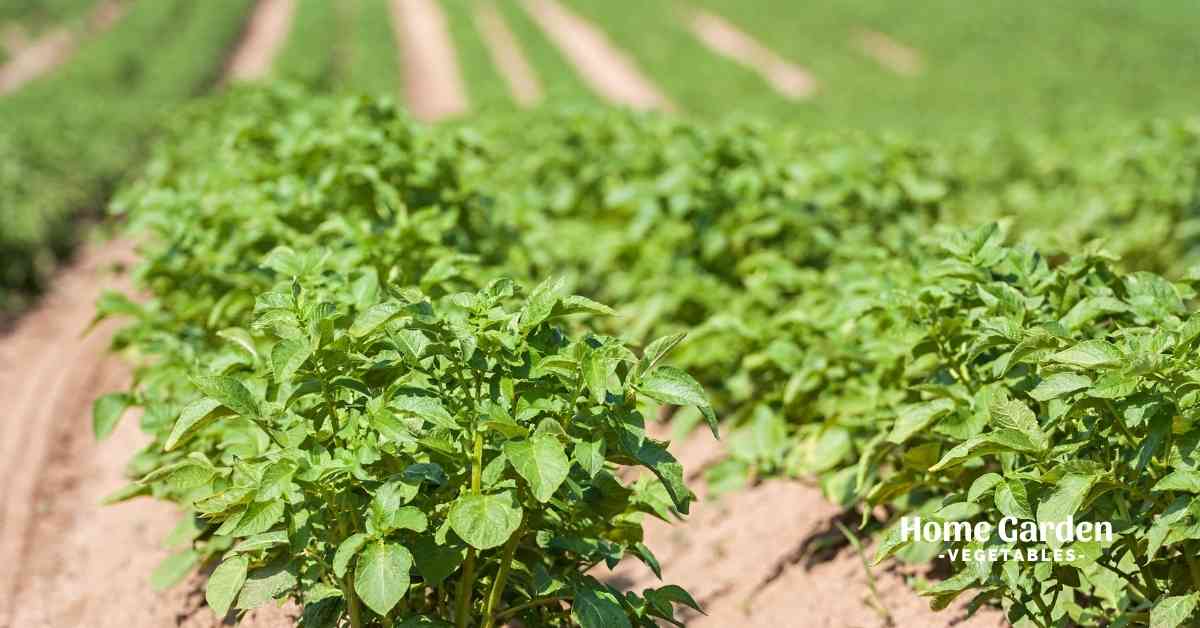Large amounts of direct sunshine are required for potato growth. Loose soil and well-draining is the most effective approach for producing them. This somewhat acidic pH range is preferred by potatoes. Good news: Even with less-than-ideal soil and growing season conditions, potatoes will almost always provide a fair crop.
Keep weeds out of your potato crop to achieve the best results. ‘ Potatoes should be rotated in the garden so that they are never grown in the same place for more than three to four years after they were last planted there.
Reader Poll: What online courses would interest you?
When potatoes are ready to be harvested, I get more enthusiastic than any other root crop I cultivate. In exchange for every potato I plant, I get between eight and ten potatoes.
However you choose to cultivate potatoes, the general planting principles are always the same.
Preparation For The Spring Potato Planting
Potatoes may be seeded in the early spring, although soil temperatures should be considered. Potatoes need a soil temperature of at least 45 degrees Fahrenheit to thrive. The soil should be moist but not sopping wet before planting.
Subscribe to our newsletter!
Potatoes can tolerate a little amount of frost, but if you anticipate a late-season cold snap, protect the plants by covering them with frost protection. To extend the growing season and keep potatoes fresh for as long as possible, the second crop of potatoes may be planted after June 15.
The Potatoes Should Be Cut Before Planting Them
A few weeks before planting, place your seed potatoes where they will be exposed to light and temperatures ranging from 60 to 70°F. When the seeds begin to sprout, this is how it will begin. It is suggested that the bigger seed potatoes be sliced into smaller pieces a day or two before planting. It is recommended that each component has at least one or two eyes or buds and is about two inches square. It is possible to cultivate smaller potatoes as a full crop. Plant entire potatoes less than the size of a golf ball. For many days, the wounds will be covered with a thick callous that will prevent any decay.
Potatoes Are A Great Tool For Gardening
The best way to cultivate potatoes is to put them in rows. At least six to eight inches deep, begin by digging a trench. Potatoes should be planted every 12-15 inches, with rows three feet apart, cut side down with the eyes looking up. If you simply want to cultivate tiny potatoes or have a limited amount of room, you may lower the distance between plants.
Start by digging a trench no deeper than four inches. The dirt surrounding your plants may need to be filled in or even mounded as they develop. Before planting, the last round of soil preparation is usually suggested. weeds and loosen the soil so that new plants may take root more rapidly. weeds.
When Soak Potatoes In Water
Potato vines need to be well-watered in the summer, particularly during blooming and shortly after. During the blossoming stage, a constant supply of water is crucial for a good harvest. On average, a week’s worth of rain or water is needed to keep potatoes healthy. Keep watering your plants until the foliage turns yellow and dies back, and then stop! Start preparing your potatoes for harvesting as soon as possible!
The sooner they’re ready, the better 2 to 3 weeks after blooming is complete, harvesting young potatoes takes place. – It’s best not to be too invasive while harvesting potatoes for fresh eating from the plants. Take out just the heaviest young potatoes, and let the others grow. Eat just what you need at this time. Eat the fresh potatoes you’ve produced yourself as soon as possible since they’re a delicacy.
For long-term preservation, potatoes should be harvested when the foliage has gone down. A firm fork is needed to pull potatoes from the ground. If the weather is dry, you may leave the potatoes unwashed for two or three days before peeling and storing them. Long-term preservation requires that these skins develop throughout the curing process. A dry place such as a garage or covered porch is ideal for drying off potatoes during harvest.
Humidity And Temperature Controls In Storage
Potatoes may be safely stored until spring in our underground root cellar at Seed Savers Exchange. To keep your possessions safe, they should be stored in a well-ventilated, dark, and cold location. In a perfect world, the temperature in the room would range from 35 to 40 degrees Fahrenheit. Some kinds are more resistant to freezing and thawing than others. In the autumn, Red Gold and Rose Gold flourish, while Carola and Russets keep very well in storage.
Seeds In The Ground
Home gardeners may conserve seeds to pass along to future generations. You should save the finest potatoes to use them for reseeding. After a few years, the size usually starts to shrink. Potatoes have a high susceptibility to pests and disease. An annual supply of new USDA-certified seed stock is vital for maximizing output.
To preserve potato genetic variety and deliver high-quality seed potatoes, SSE is working with University of Wisconsin-Madison experts to remove viruses from heritage potatoes.
Conclusion
As an alternative to hilling, plant your potatoes 8 to 9 inches deep. Because of this, you might expect slower potato growth and a lesser crop. Acidic soil is preferable to that which is more alkaline for potatoes (5.8-6.5 pH). Take care of your soil by adding composted manure and fertilizer. Potatoes may be grown in pots or containers using just one part peat moss, one part organic potting soil, and one part beef cow dung. If you want to make weeding easy, you should plant your potatoes at least two feet apart (and have the room).

